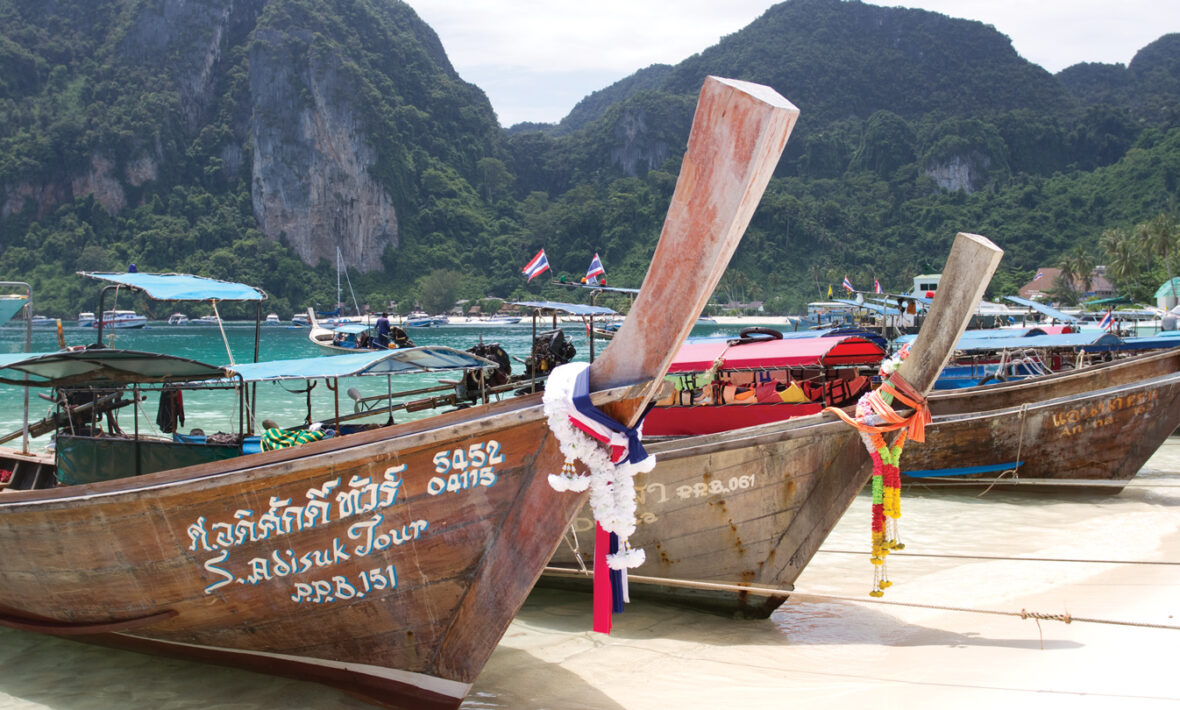
In Danny Boyle’s cult 2000 movie, The Beach, Leonardo Di Caprio’s character, Richard, backpacks across the gulf of Thailand, seeking meaning (as well as French women and cannabis). Following a trail of whispers and a faded map, he swims to a lush lagoon that has all the hallmarks of paradise…

Crystalline waters breaking on the bay like shards of sky, pure white sands, cragged rock formations reaching from the sea. But the true draw of this magical cove had nothing to do with its looks. It possessed something special; something that marked it out from the rest of Thailand. It was completely hidden from the rest of the world.
The major motive of The Beach’s island dwellers – and a source of tension throughout the movie – is keeping their utopia away from the prying eyes of tourists; the point being, there’s not many places like this left in the earth, let’s preserve it, let’s make this place different.
https://www.instagram.com/p/BoH6KM8BHWJ/
Ironic then, that the movie brought more tourists than ever to the paradise location it was set: Maya Bay in Thailand’s Ko Phi Phi Lee.
I visited Ko Phi Phi Lee a few years ago, and it was the polar opposite of the movie’s portrayal of a sheltered sanctuary. It was genuinely comical as the captain of our tiny vessel jostled with a hundred other boats, banging and shouting as we all desperately tried to moor on a small stretch of coastline. Once onto the – admittedly stunning – beach, it was a case of hundreds of tourists desperately trying to line up a photo that didn’t involve strangers in the background, posing awkwardly for their own iconic shot.
https://www.instagram.com/p/BTgZ-vIlB0q/
The bay reportedly received up to 5,000 tourists and 200 boats a day, bringing pollution from litter, boats and sun cream. An estimated 80% of the beautiful coral around the reef has been destroyed.
For obvious reasons, the Thai government has been reluctant to close the bay to visitors, as it generates around £9.5m in revenue a year. But the ecological situation has reached critical mass. In October, Thailand’s department of national parks, wildlife and plant conservation announced the bay’s indefinite closure, until it ‘fully recovers to a normal situation.’ The Maya Bay park chief has planted more than 1,000 corals, and has pledged to keep expanding the project.

This news follows on the heels of the Philippines government’s decision to close Boracay, an equally popular tourist destination that has been ravaged by pollution in recent years.
You may not be able to tick off that bucket list destination for a while, but that’s better than destroying it entirely. It’s important that governments continue to think about preservation rather than just potential income. We all want to visit these iconic beauty spots, but oversaturation and pollution is something that has to be handled delicately, otherwise there won’t be any beauty spots left.

